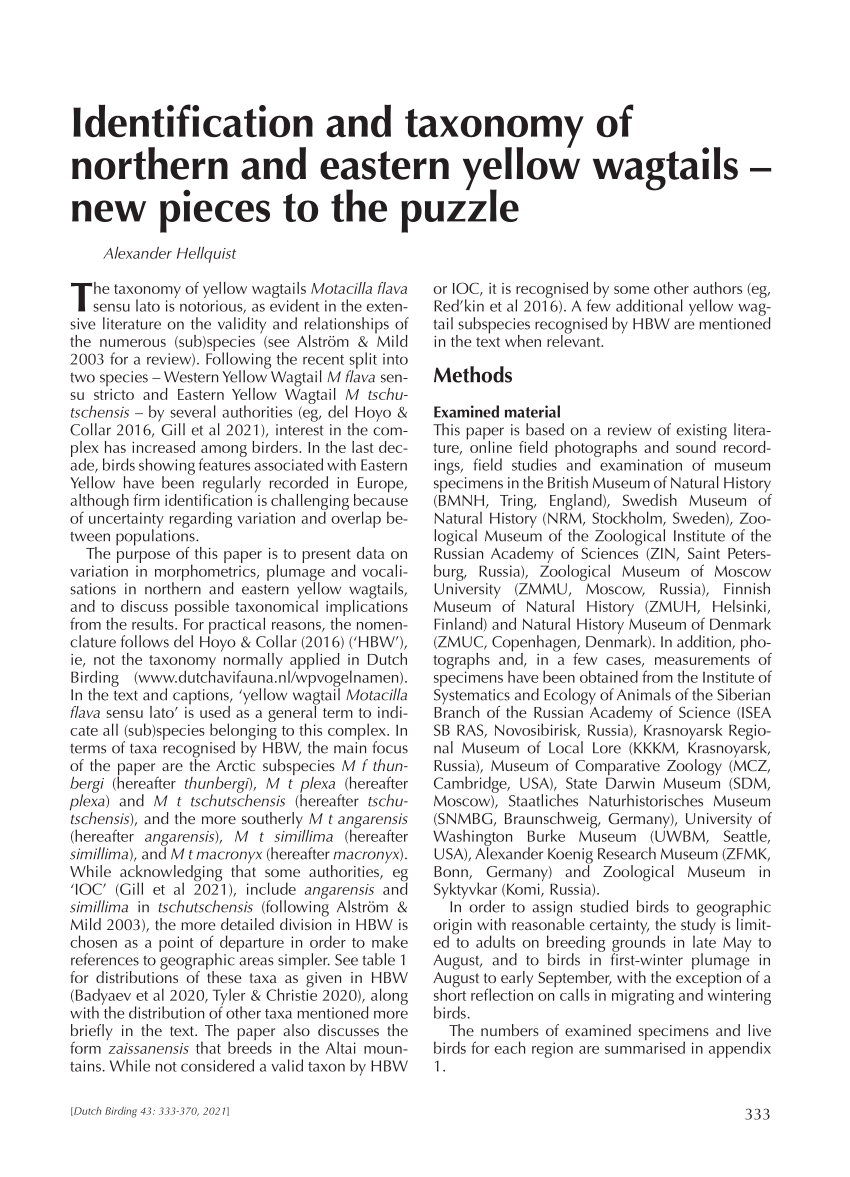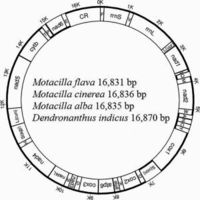MJB
Well-known member
The link in both cases leads to George's paper.Looks like a correct link to me, matching both the accompanying title and abstract, whereas I think you're referencing another title that's not yet published (?)
MJB
The link in both cases leads to George's paper.Looks like a correct link to me, matching both the accompanying title and abstract, whereas I think you're referencing another title that's not yet published (?)
It takes me to the latest Dutch Birding issue, which includes both an article about Redstarts and about WagtailsThe link in both cases leads to George's paper.
MJB

Mike, I don't understand how this is possible.The link in both cases leads to George's paper.
MJB
Neither do I, Peter, but now I can't see the post citing the in-press Guallar & Figuerola article. It looks like a glitch somewhere was just temporary. The only paper I can find with that author combination is from 2016!Mike, I don't understand how this is possible.

I would bet that this isn't the last potential new taxon within the Yellow/Citrine Wagtail complex...!Alexander Hellquist, Fredrik Friberg, Petter Haldén, Peter Schmidt, Ming Ma, Gou Jun, Urban Olsson and Per Alström. 2021. Taxonomic status of grey-headed Yellow Wagtails breeding in western China. Avian Research 12: 53.
Taxonomic status of grey-headed Yellow Wagtails breeding in western China - Avian Research (Open access)
Abstract
Background: Field studies from 2011 onwards have demonstrated the presence of a breeding population of Yellow Wagtails (Motacilla flava) in the Xinjiang Uygur Autonomous Region, China that is phenotypically distinct from known subspecies occurring in Asia. Here we describe the plumages and vocalisations of this population and discuss its taxonomic status.
Methods: The analysis of plumage is based on field studies and photos available online. Recordings of vocalisations are compared with recordings from other Yellow Wagtail populations, and differences are analysed based on sonograms. Mitochondrial DNA from one individual is compared to other Yellow Wagtail taxa.
Results: Unlike M. flava subspecies breeding in or near Xinjiang, males in the studied population show a blue-grey head without prominent white supercilium, being most similar to the widely disjunct M. f. cinereocapilla. They differ from the similarly widely allopatric M. f. thunbergi, which might occur as a migrant or vagrant in Xinjiang, by on average cleaner yellow breast and more extensive white on the throat, and from the widely disjunct M. f. plexa and M. f. macronyx, which might also occur on migration in that area, by softer contact calls and slower pace of song. Females are similar to female M. f. feldegg in plumage. The mitochondrial ND2 tree shows the single sample from Xinjiang to be nested in the clade of western Yellow Wagtail taxa.
Conclusion: We discuss whether the Xinjiang breeding population could represent an intergrade between subspecies breeding nearby, or whether it is better regarded as a separate as yet unrecognized subspecies. We argue that the localization of its apparent range in relation to other subspecies along with fairly consistent male and female plumages suggest that it is more likely to represent an undescribed taxon, but conclude that more research is needed to firmly establish its status.
Alexander Hellquist. 2021. Identification and taxonomy of northern and eastern yellow wagtails – new pieces to the puzzle. Dutch Birding 43: 333-370.



Abstract
The genus Motacilla belongs to Motacillidae (Passeriformes), where mitochondrial features are poorly understood and phylogeny is controversial. Whole mitochondrial genome (mitogenome) data and large taxon sampling are considered to be ideal strategies to obtain this information. We generated four complete mitogenomes of M. flava, M. cinerea, M. alba and Dendronanthus indicus, and made comparative analyses of Motacilla species combined with mitogenome data from GenBank, and then reconstructed phylogenetic trees based on 37 mitochondrial genes. The mitogenomes of four mitogenome sequences exhibited the same gene order observed in most Passeriformes species. Comparative analyses were performed among all six sampled Motacilla mitogenomes. The complete mitogenomes showed A-skew and C-skew. Most protein-coding genes (PCGs) start with an ATG codon and terminate with a TAA codon. The secondary structures of RNAs were similar among Motacilla and Dendronanthus. All tRNAs except for trnS(agy) could be folded into classic clover-leaf structures. Three domains and several conserved boxes were detected. Phylogenetic analysis of 90 mitogenomes of Passeriformes using maximum likelihood (ML) and Bayesian inference (BI) revealed that Motacilla was a monophyletic group. Among Motacilla species, M. flava and M. tschutschensis showed closer relationships, and M. cinerea was located in a basal position within Motacilla. These data provide important information for better understanding the mitogenomic characteristics and phylogeny of Motacilla.



Mentioned by George Sangster on the Dutch Birding website:
Doniol-Valcroze, P, Coiffard, P, Alström, P, Robb, MS, Dufour, P & Crochet, PA 2023. Molecular and acoustic evidence support the species status of Anthus rubescens rubescens and Anthus [rubescens] japonicus (Passeriformes: Motacillidae). Zootaxa (in press).
Abstract: The Buff-bellied Pipit Anthus rubescens comprises two allopatric subspecies groups: A. r. rubescens and A. r. alticola in North America and A. [r.] japonicus in north-east Asia. Despite their great morphological resemblance in breeding plumage, most individuals can be assigned to one or the other subspecies group in non-breeding plumage. Allopatric distributions, morphological differentiation and previously reported molecular divergence suggested the need for additional taxonomic study to assess the rank of these two populations. To resolve the taxonomy of the Buff-bellied Pipit species complex we analysed i) two mitochondrial DNA (mtDNA) loci and ii) nine bioacoustic parameters across 69 sound recordings (338 flight calls) recovered from public databases using principal component analysis and Euclidean distance measures. By comparing our mtDNA and call divergence measures with similar values measured between long-recognised species pairs of the genus, we show that the level of mitochondrial and acoustic divergence between the two Buff-bellied Pipit subspecies groups is typical of species-level divergence in the genus Anthus. Therefore, we recommend splitting the Buffbellied Pipit species complex into two species: Anthus rubescens (American Pipit) and Anthus japonicus (Siberian Pipit). Our results also suggest that the Water Pipit A. spinoletta deserves taxonomic reassessment as its lineages are highly divergent in acoustics and mtDNA, while mtDNA relationships suggest paraphyly relative to the Rock Pipit A. petrosus. Our work highlights the crucial importance of integrative approaches in taxonomy and the usefulness of bioacoustics in studying cryptic diversity.
